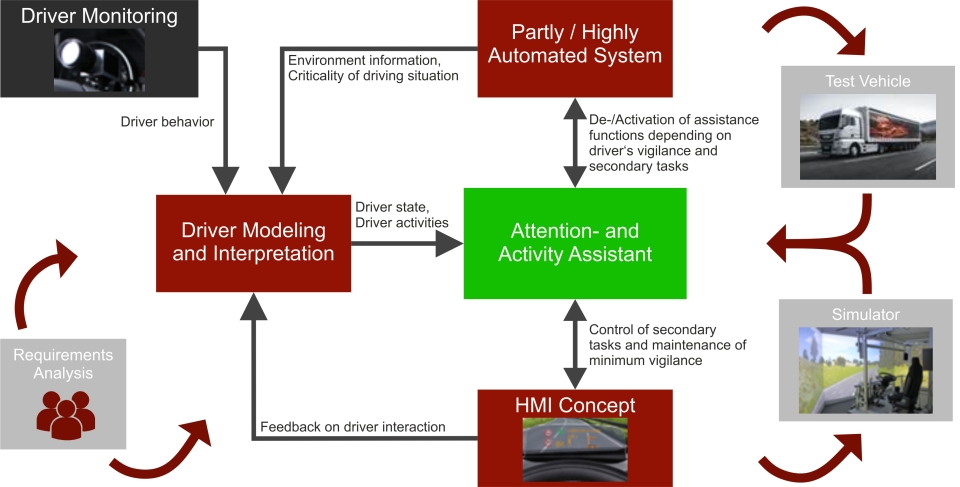The project’s name TANGO stands for „Technologie für automatisiertes Fahren, die nutzergerecht optimiert wird“ in German. Its English equivalent is as follows „Technology for automated driving, optimized to the benefit of the user“.
TANGO aims at improving the user’s experience and the acceptance of automated driving functions for trucks. During the project, new technologies will be developed providing significant added values while ensuring the required level of comfort for the driver during the different levels of automation.
Compared to manually driven vehicles, automated vehicles can:
- significantly improve the traffic safety and efficiency,
- render the driver’s experience less exhausting and stressful, as well as
- enable the safe use of integrated infotainment and communication systems.
Nevertheless, automated vehicles could have a negative impact; while the automation is capable of taking over the driving controls for a certain period of time, the driver shall monitor the traffic situation and the system’s behavior sufficiently in order to intervene if necessary. The lack of driving tasks which need to be performed by the driver can result in a reduced attentiveness level and an increased desire to perform secondary tasks or activities. Non-driving-related tasks or activities are neither provided by the current state of the art, nor have they been allowed by the previous legislations.
In order for the drivers to benefit from the advantages of partly automated and highly automated vehicles without compromising their levels of comfort (e.g. A higher accident risk due to a reduced situational awareness), the interactions with the automated system and the secondary task or activity shall be user- and situation-specific.
The development of an “attention and activity assistant” (Figure) is at the core of the TANGO project. It provides the drivers with diverse secondary tasks based on their current status, the current traffic situation, automation level and the interaction channel being used. By doing so, the project combines proven environment sensors with new cabin-interior sensors and new HMI-concepts.

- Figure: Overview of the TANGO project with the „attention and activity manager“ as a central element of the overall system.
The problem being addressed by this research project focuses mainly on the needs of truck drivers in particular. The development process is user-oriented and spans several phases starting with user research, going through requirements analysis, concept creation and prototyping, and all the way to the evaluation phase. The goal of the project is a prototypical realization of the overall system and the integration of the HMI and cockpit concepts for the „attention and activity assistant“ in a truck. The tests accompanying the development process and the evaluations performed with test subjects will take place in the simulator as well as in the test vehicle.


